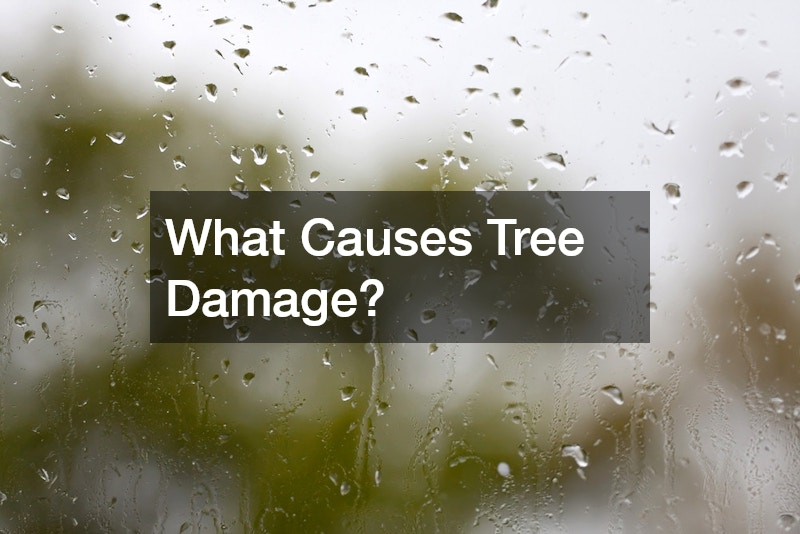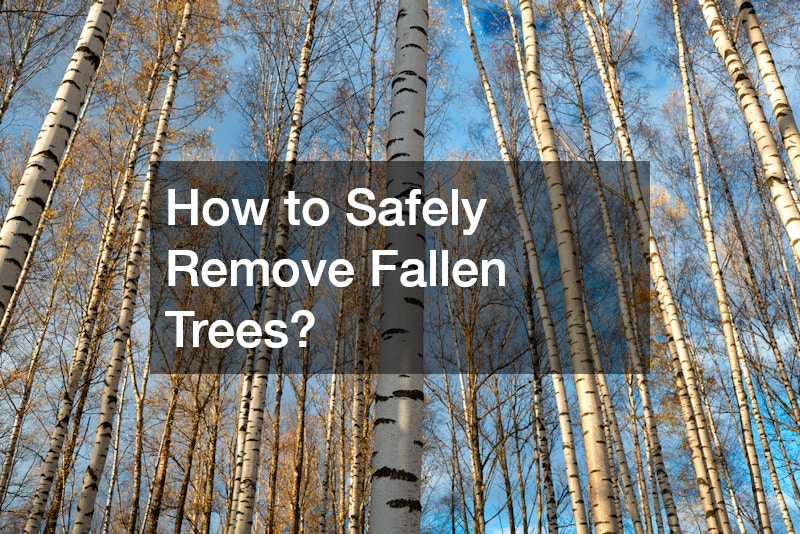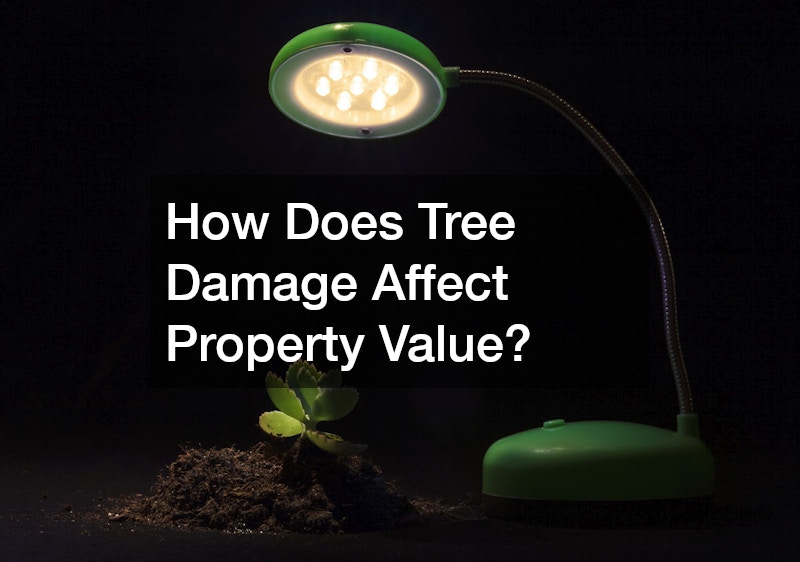
Your Guide to Tree Damage Cleanup
Tree damage can pose a significant threat to the safety of your property, the health of the trees themselves, and the surrounding environment. Whether a result of severe weather, pest infestation, disease, or human activities, addressing tree damage promptly is essential to minimize further risks. This comprehensive guide will take you through the causes of tree damage, how to assess it, the tools and techniques necessary for cleanup, and how to prevent future issues. It will also help you understand when it’s best to call a professional for assistance, as well as the importance of proper disposal and tree maintenance. Additionally, we’ll explore how tree damage can impact other areas of your property, including roofing, and the role of professionals such as a roofing company or a local roofing contractor.
What Causes Tree Damage?

Weather-related Causes
One of the primary reasons for tree damage is extreme weather conditions. High winds, heavy snowfall, and intense storms can cause tree branches to break or even uproot trees entirely. In many cases, weather-related damage occurs suddenly, often without warning. Trees that are already weak due to other stress factors are particularly vulnerable during severe weather events. If tree damage affects your roof, it’s important to contact a roofing company or a local roofing contractor to assess potential damage to your home’s structure.
Insect Infestation
Insects are another significant cause of tree damage. Pests like termites, beetles, and caterpillars can weaken trees by feeding on leaves, bark, and wood. Infestations often go unnoticed until the damage becomes severe, causing structural instability and, in extreme cases, the death of the tree. Insect-infested trees may also pose a risk to nearby structures, potentially causing damage to your roof, siding, or foundation. In such cases, contacting both a local tree service and a roofing contractor might be necessary for a comprehensive assessment.
Disease-induced Weakening
Fungal diseases, bacteria, and viruses can infect trees, leading to a gradual decline in health. Common tree diseases such as oak wilt, Dutch elm disease, and powdery mildew can weaken a tree’s defenses, making it more susceptible to damage from weather events or pests. A sick tree is often much more prone to breaking or uprooting during storms or winds. If a diseased tree falls on your roof or surrounding property, it may require the attention of both a local tree service for removal and roofers for roof repairs.
Human Activities
Human activities are another significant factor contributing to tree damage. Construction work, improper pruning, and changes in land use can stress trees and make them more vulnerable to other forms of damage. Additionally, vehicle collisions and vandalism can directly harm trees, leaving them weak and at risk. Any tree damage resulting from human activities that impacts your home or property should prompt a call to both a tree service and a roofing company to assess the full scope of the damage.
Environmental Stress Factors
Environmental stressors such as drought, pollution, and soil compaction can affect a tree’s overall health. Lack of water, exposure to harmful chemicals, and changes in the surrounding landscape can slowly degrade the tree’s health, making it more susceptible to damage from other factors. Stressors that weaken trees also increase the likelihood of damage to your home, particularly the roof. Regular roof inspections by a roofing company or local roof cleaning service can help you identify potential risks from falling debris.
How to Assess Tree Damage?
Initial Visual Inspection
The first step in assessing tree damage is a visual inspection. Look for broken or fallen branches, cracks in the bark, leaning trunks, or any signs of uprooting. A healthy tree should have a straight trunk and a full canopy of leaves. If any of these characteristics are missing or damaged, it’s important to assess the extent of the damage carefully. If a tree has caused damage to your roof or home, a roofing company may need to conduct a roof inspection to determine if there are any structural issues.
Identifying Hazardous Trees
Not all damage is immediately dangerous, but some situations may present an urgent hazard. If a tree is leaning dangerously toward your home, power lines, or a frequently trafficked area, it could pose a risk to your safety and property. Hazardous trees often have visible signs of structural damage or decay, such as hollow trunks or missing limbs. In such cases, it’s essential to call a local tree service for professional tree removal. If the tree is near your roof or home, you may also need to have a local roofing contractor assess any potential risk to the structure.
Determining Structural Integrity
A tree’s structural integrity is critical to determining whether it can be salvaged or if it needs to be removed. Check for large cracks, visible rot, or weakened branches. Trees with compromised structural integrity may be unable to withstand future storms, and removing them may be the safest option. If the tree poses a risk to your roof, contacting both a local tree service and a roofing company for their expert opinions is essential. Roof repairs may be necessary if the tree has caused any structural damage to your home’s roofing system.
Consulting a Professional Arborist
If you’re uncertain about the severity of the damage, or if you’re unable to assess the tree’s structural integrity on your own, it’s wise to consult a professional arborist. These trained experts can evaluate the tree and recommend the best course of action, whether that’s a simple pruning, treatment for disease, or removal. If the damage has affected your roof, it’s also a good idea to have a local roofing contractor conduct insurance roof inspections to determine if your policy covers repairs for any damage caused by fallen trees.
Understanding Signs of Recovery Potential
If the damage is not catastrophic, a tree may have the potential to recover. Signs that indicate recovery potential include the presence of new growth, intact bark, and strong root systems. Professional arborists can also provide insights into whether a tree is likely to recover or if it’s beyond saving. In cases where tree recovery is possible, it’s essential to continue monitoring the tree’s health. If the tree is near your roof or other structures, it’s important to check for potential risks that might require a local roofing contractor or tree service to take corrective actions.
When to Call a Professional for Tree Damage Cleanup?

Damage to Your Home’s Roof
If a tree has fallen on your home or caused damage to your roof, it’s essential to call a professional immediately. The risks involved in handling large, fallen trees on rooftops include structural damage to the home and potential injury. Tree removal services have the necessary tools and expertise to safely remove the tree without causing further harm. Additionally, a local roofing contractor should be called in to assess any damage to the roofing system and provide roof repairs if necessary.
Situations Involving Emergency Removal
Emergency tree removal may be required if a tree has fallen on power lines, blocking access to essential services or posing a risk of electrical fires. In cases of major storms or natural disasters, professional services are essential for managing the cleanup process efficiently and safely. A tree service will handle the tree removal, while a roofing company or local roof cleaning service may need to assess roof damage caused by debris.
Importance of Safety Risk Assessment
Tree damage cleanup often involves working with hazardous materials or large, unstable trees. Professionals are trained to perform safety assessments and ensure the area is secure before beginning cleanup work. This helps avoid further damage and reduces the risk of injury to homeowners or cleanup crews. If the tree has fallen near your home, roofers should also evaluate the potential impact on your roofing system before any work begins.
Cost-benefit Analysis of Professional Help
While hiring a professional can be costly, the benefits often outweigh the costs. Professionals can assess the damage quickly, remove dangerous trees, and prevent further issues from arising. Attempting to handle significant tree damage cleanup without experience can result in injury, damage to property, and even legal complications. In the case of roof damage, roofers will ensure that repairs are done correctly, potentially saving you from more expensive future repairs.
Legal Considerations and Regulations
Certain areas have laws and regulations regarding tree removal, especially when it comes to protected species or trees located in public spaces. Before attempting any cleanup, it’s important to check with local authorities to ensure you’re in compliance with any legal requirements. Professionals will be familiar with these regulations and can navigate them on your behalf. If damage has occurred to your home, contacting a roofing company for guidance on insurance roof inspections may be necessary to ensure your claim is properly filed.
What Tools and Equipment are Needed for Tree Damage Cleanup?
Basic Hand Tools
For smaller-scale tree damage cleanup, basic hand tools such as pruning shears, saws, and axes are essential. These tools are useful for trimming smaller branches or cutting up fallen limbs. Having the right tools on hand can make the cleanup process more efficient and manageable. However, for larger trees or trees that have fallen on structures, professional-grade equipment is required. In such cases, tree removal services should be contacted to handle the job, while a local roofing contractor may need to inspect the roof for any damages.
Safety Gear Essentials
When handling tree damage, safety is a top priority. Personal protective equipment (PPE) such as helmets, gloves, goggles, and ear protection should always be worn to prevent injuries. Chainsaw users should also invest in protective chaps to shield their legs from potential accidents. If the tree damage has affected your roof, roofers may also recommend protective measures during cleanup to avoid causing any additional harm to the roofing system.
Professional-Grade Machinery
For larger-scale cleanup, especially in cases of significant tree damage, professional-grade machinery is necessary. Chainsaws, stump grinders, and wood chippers are among the key pieces of equipment used by professionals to efficiently remove fallen trees and debris. A local tree service is equipped with this machinery, ensuring that the job is done quickly and safely.
Protective Equipment for Larger Operations
During large-scale tree removal projects, additional protective equipment is needed. This may include safety harnesses, ropes, and heavy-duty clothing. These tools ensure the safety of workers when handling particularly tall or dangerous trees. When removing a tree near structures, such as a house or roof, professionals will take extra precautions to ensure that no additional damage is caused.
Maintenance of Cleanup Tools
Regular maintenance of tools and equipment is crucial to ensure optimal performance. Sharpening chainsaws, checking safety mechanisms, and replacing worn-out parts will prevent malfunctions and improve safety during the cleanup process. Ensuring that your local tree service uses well-maintained equipment is key to a smooth and effective cleanup operation.
How to Safely Remove Fallen Trees?

Assessing the Situation and Hazards
Before attempting to remove a fallen tree, it’s essential to assess the situation thoroughly. Look for any immediate hazards such as power lines, sharp branches, or surrounding structures. If the tree has fallen near a building, carefully inspect the roof and surrounding areas for damage. A local roofing contractor may need to assess your roof to determine if any repairs are required.
Cutting Techniques for Safety
When cutting up fallen trees, it’s important to follow the proper techniques. Begin by cutting away smaller branches before addressing the larger trunk. Always cut at the correct angles to prevent the chainsaw from getting stuck or causing injury. Professionals from a local tree service are trained to perform these cuts safely.
Managing Large Logs and Debris
Large logs can be difficult to manage, so it’s important to cut them into smaller, manageable sections. Use equipment such as a log splitter to make the job easier. Additionally, make sure to clear the area of any debris to avoid tripping hazards. If the tree has fallen on your roof, a roofing company should be contacted to evaluate the roof for potential damage.
Avoiding Utility Line Dangers
If the fallen tree has come into contact with utility lines, do not attempt to remove it yourself. Contact a professional service that has the necessary equipment to safely disconnect power and remove the tree. A local tree service is trained in handling such hazardous situations safely.
Cleaning Up Surrounding Areas
Once the tree has been removed, ensure that the surrounding area is thoroughly cleaned. This includes removing smaller branches, leaves, and any remnants that could cause a hazard. For trees that have fallen on a roof, a local roofing contractor should assess any damage and clean the roof to prevent further complications.
What to Do with Tree Debris?
Sorting and Segregating Waste
Proper sorting of tree debris is essential for efficient disposal. Separate wood from leaves, branches, and other materials to ensure that each type of waste is dealt with appropriately. This can often be handled by a landscaping company if you’re interested in turning debris into mulch or compost.
Recycling and Composting Options
Tree debris can often be recycled or composted. Wood chips can be used for mulch or to enhance soil quality, while leaves and smaller branches can be composted to create nutrient-rich soil. A local tree service may offer wood chipping services, which can be helpful for managing tree debris.
Disposal Regulations and Guidelines
Some areas have specific regulations regarding tree debris disposal. It’s important to check with local waste management services to ensure that you are following the correct procedures for disposing of tree waste. Professional tree services are familiar with local regulations and can help ensure compliance.
Creative Reuse and Upcycling Ideas
Tree debris can also be upcycled into useful items. Branches and trunks can be repurposed for furniture, sculptures, or landscaping features. Getting creative with tree debris not only reduces waste but also adds a unique touch to your outdoor space.
Hiring a Waste Removal Service
For large-scale tree damage cleanup, hiring a waste removal service is often the most efficient option. These professionals have the equipment to haul away large quantities of debris, ensuring a clean and safe property.
How to Prevent Future Tree Damage?
Regular Tree Health Assessments
Regular inspections by an arborist can help identify potential tree health issues before they become serious. Early detection of problems such as disease or pest infestations can prevent major damage in the future. If you suspect a tree could cause future damage to your property, consult both a local tree service and a roofing company for guidance.
Pruning and Maintenance Techniques
Routine pruning helps maintain a tree’s health and structural integrity. By removing dead or diseased branches, you reduce the risk of larger limbs breaking during storms or high winds. Pruning should be done by professionals, particularly when trees are located near your home or roofing system.
Disease and Pest Management
Monitoring your trees for signs of disease and pest infestation is crucial to prevent damage. Regular treatments, such as applying fungicides or insecticides, can help keep your trees healthy and resistant to damage.
Strategic Tree Planting
When planting trees, consider their location and species. Choose trees that are well-suited to your climate and soil conditions. Proper spacing and placement will reduce the risk of tree damage from overcrowding or root competition.
Integrating Climate Resilient Practices
As climate change continues to impact weather patterns, it’s important to adopt climate-resilient practices. Planting drought-resistant species or trees that can withstand extreme weather conditions will reduce the likelihood of future damage.
How to Handle Emergency Tree Damage Situations?
Preparedness and Emergency Kit Essentials
In the event of a storm or other tree-related emergency, having an emergency preparedness kit on hand is essential. This kit should include items like flashlights, first-aid supplies, and basic tools for handling minor tree debris.
Immediate Steps to Take Post-damage
After a storm or tree-related emergency, assess the damage immediately. Stay safe by avoiding downed power lines and large debris. If necessary, contact emergency services or a tree removal service to handle the situation.
Navigating Insurance Claims
If tree damage has caused significant property damage, you may need to file an insurance claim. Ensure that you document the damage thoroughly and contact your insurance company to understand the claims process.
Safety Protocols for Immediate Threats
In emergency situations, prioritize safety above all else. Avoid attempting to remove large or dangerous trees on your own, and wait for professionals who are trained in handling hazardous situations.
Collaborating with Local Emergency Services
In severe cases, collaborating with local emergency services may be necessary. Firefighters, police, and other services can help ensure your safety while you wait for tree damage cleanup crews to arrive.
How Does Tree Damage Affect Property Value?

Visual Impact on Aesthetics
Damaged trees can negatively impact the visual appeal of your property. Fallen trees or unsightly stumps can detract from the overall aesthetic, potentially lowering property value.
Structural Risks and Insurance Implications
Tree damage can also pose structural risks to your home, including damage to roofs, windows, and fences. This can result in costly repairs, as well as potential insurance claims.
Ecological Contributions of Trees
Trees contribute to the local ecosystem by providing shade, improving air quality, and supporting wildlife. Damaged or unhealthy trees may result in the loss of these ecological benefits, which can impact the overall value of your property.
Long-term Impact of Neglecting Damage
Neglecting tree damage can have long-term consequences, leading to further deterioration of your property’s appearance and structural integrity. Acting promptly to address tree issues helps protect your home and maintains its value.
Conclusion
Tree damage cleanup is an essential aspect of property maintenance, as it can directly affect both the safety and value of your home. By understanding the causes of tree damage, assessing the situation, and knowing when to call professionals such as a local tree service, roofing company, or landscaping company, you can ensure the protection of your home and landscaping. Regular maintenance, proper disposal, and prevention practices will keep your trees healthy and your property safe from future damage.

